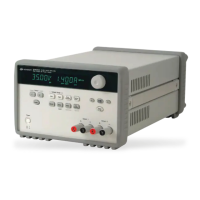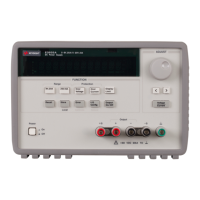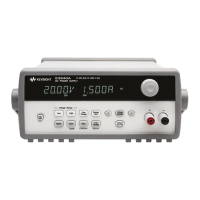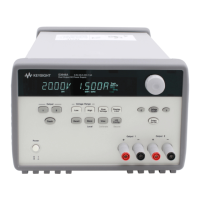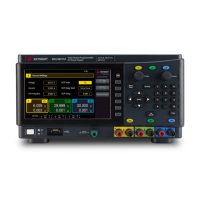CV line regulation
This test measures the change in output voltage that results from a change in AC line voltage from the
minimum to maximum value within the line voltage specifications.
1.
Turn off the power supply using the AC line switch.
2.
Connect the power supply output with a DMM and an electronic load.
3.
Connect a variable AC Source or Variac to the AC input, set to an appropriate line voltage for the
power supply configuration.
4.
If you are using a PC to control the power supply, connect a LAN or USB cable from the power sup-
ply to the PC.
5.
Turn on the power supply using the AC line switch.
6.
Set the power supply settings as described in the test record form under “CV Line Regulation”. See
the Test Record Forms under “CV Line Regulation” for details. Enable the output.
7.
Operate the electronic load in constant current mode and set its current to the value in the test
record form under “CV Line Regulation”. See the Test Record Forms under Test Description of “CV
Line Regulation” for details. Check that the front panel CV annunciator of the power supply remains
lit. If it turns to CC or UNREG, adjust the load so that the output current drops slightly until the CV
annunciator lights up.
8.
Adjust the AC power source to low line voltage limit (90 VAC for nominal 100 VAC, 104 VAC for nom-
inal 115 VAC, 194 VAC for nominal 215 VAC, or 207 VAC for nominal 230 VAC). Record the output
reading on the DMM as V
lowline
.
9.
Adjust the AC power source to high line voltage (110 VAC for nominal 100 VAC, 127 VAC for nominal
115 VAC, 237 VAC for nominal 215 VAC or 253 VAC for nominal 230 VAC). Record the voltage read-
ing on the DMM immediately as V
highline
.
10.
Take the difference between the DMM readings in steps 8 and 9 that is the CV line regulation
(V
lowline
– V
highline
). The difference of the readings during the immediate change should be within
the limit calculated from the specification.
Transient response verification
This test measures the time for the output voltage to recover to within the specified value following a
50% change in the load current.

